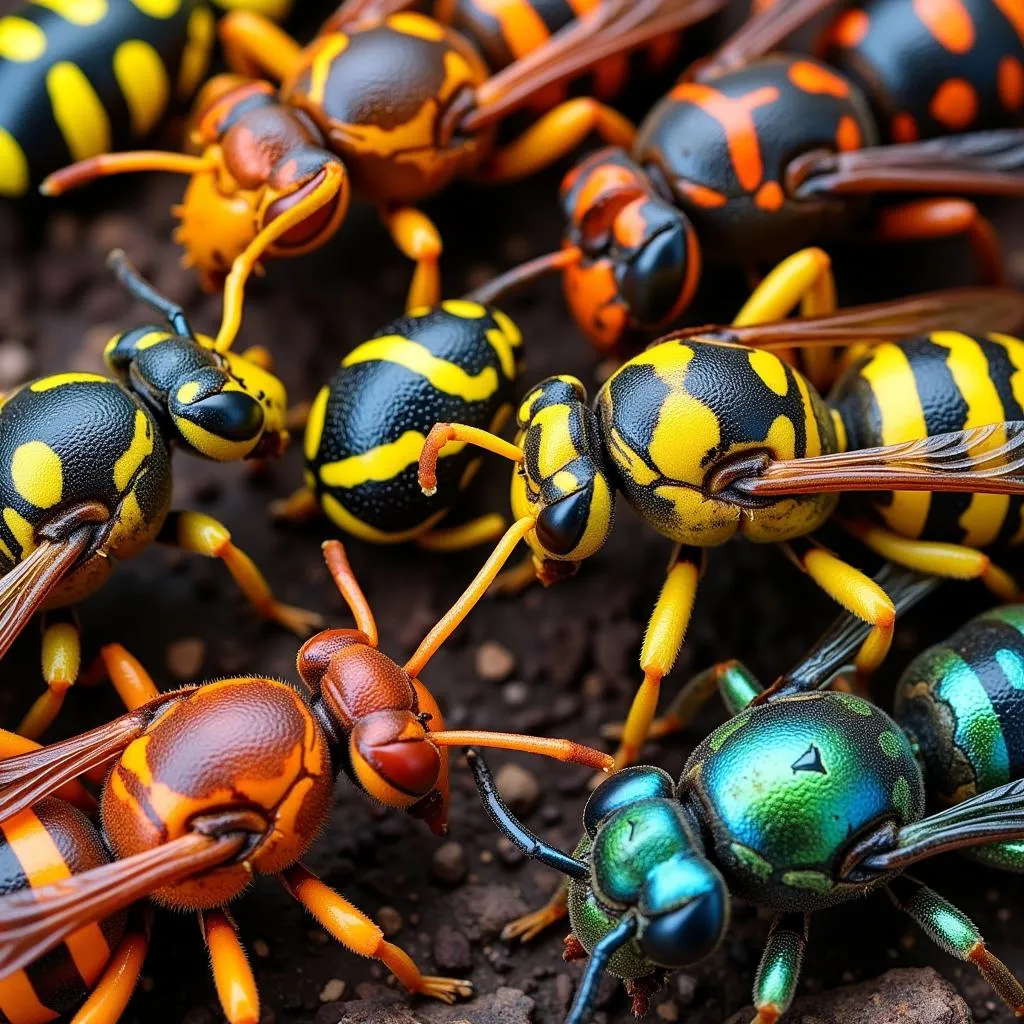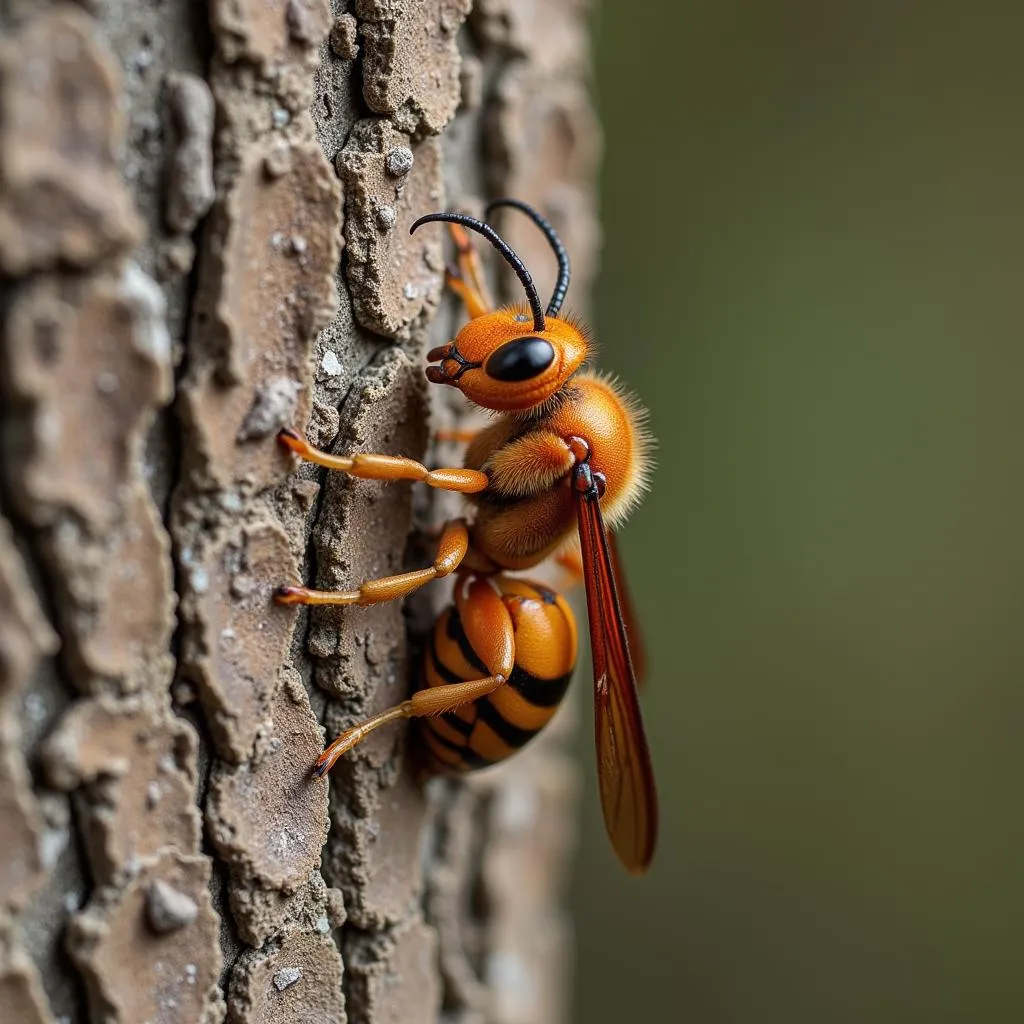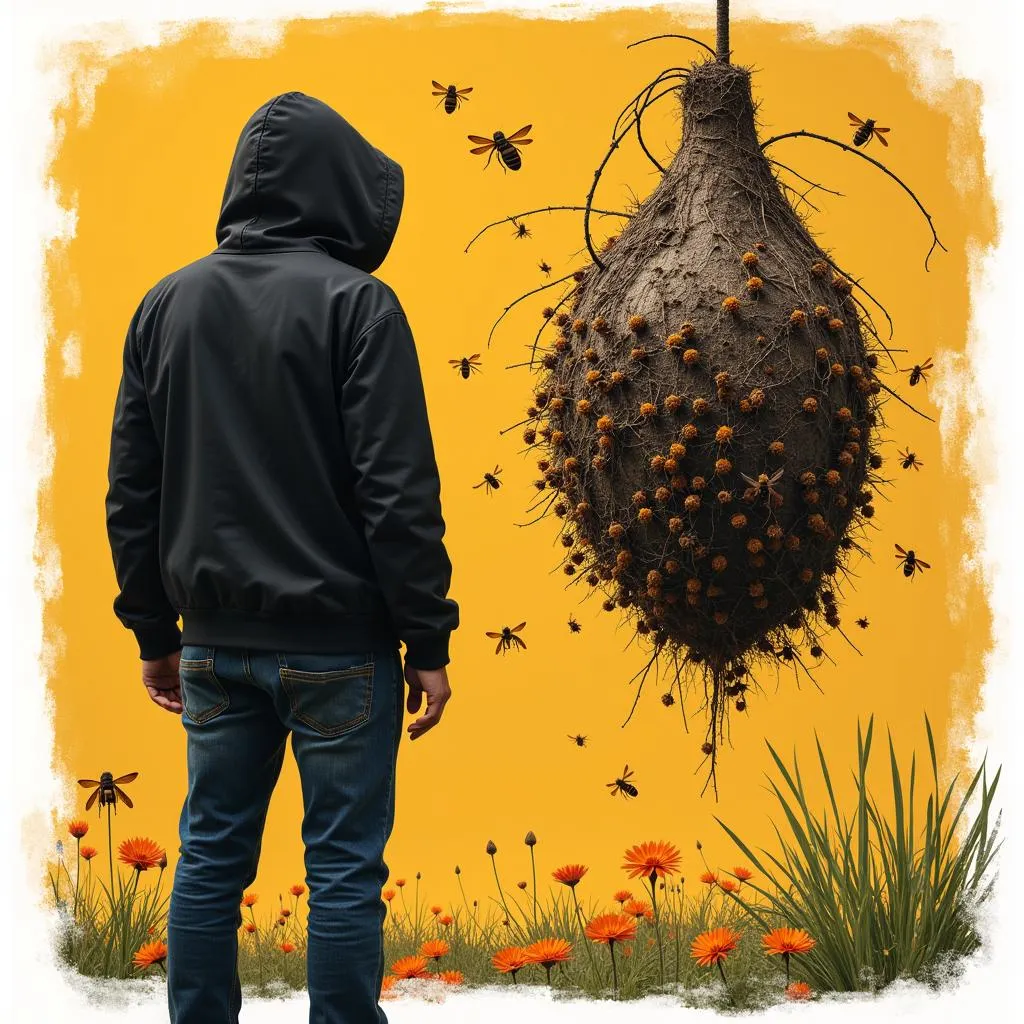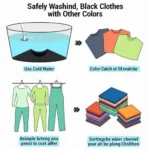Most people recognize wasps for their bright yellow and black stripes, but did you know that not all wasps share this iconic look? While the classic yellow and black pattern is common, wasp coloration can vary widely depending on the species.
 Wasp Color Variations
Wasp Color Variations
The Purpose of Wasp Colors
The colors of a wasp serve several important purposes, primarily centered around survival and communication:
- Warning Predators: The bright colors of many wasps, like yellow jackets and hornets, act as a warning signal to potential predators. This striking coloration communicates that they are armed with a painful sting and are not to be messed with.
- Camouflage: Some wasp species have evolved camouflage to blend into their surroundings. These wasps might be brown, black, or even metallic green, allowing them to stalk prey or hide from predators more effectively.
- Species Recognition: Within a species, color patterns help wasps identify each other, which is crucial for mating and social interactions within a colony.
Common Wasp Colors and Patterns
While yellow and black stripes might be the most familiar, wasps display a fascinating range of colors and patterns:
- Yellow and Black: This classic combination is seen in many social wasp species like yellow jackets, paper wasps, and hornets. The intensity and pattern of the stripes can vary between species.
- Black and White: Some wasps, like the bald-faced hornet, sport striking black and white patterns. These bold markings serve as a warning to predators.
- Red and Black: Certain wasp species, like the red paper wasp, display a combination of red and black. The red coloration can be particularly vibrant and eye-catching.
- Metallic Blue or Green: Some solitary wasps, like cuckoo wasps, have iridescent exoskeletons that shimmer with metallic blue or green hues. These vibrant colors are thought to play a role in attracting mates.
- Brown or Black: Many solitary wasp species are brown or black, providing them with camouflage when hunting or nesting in the ground.
 Camouflaged Wasp
Camouflaged Wasp
Do Wasp Colors Indicate Behavior?
To some extent, wasp colors can offer clues about their behavior:
- Brightly Colored Wasps: Wasps with vivid colors, particularly yellow and black, are often more aggressive and more likely to sting when threatened. They use their bright colors as a warning to deter potential attackers.
- Dull-Colored Wasps: Wasps with more muted or camouflaged coloration, such as brown or black, are often less aggressive and less likely to sting unless directly provoked.
However, it’s crucial to remember that every wasp species has its own unique behaviors, and color alone shouldn’t be the only factor in assessing potential danger.
What Colors Attract and Deter Wasps?
Interestingly, wasps are attracted to and deterred by certain colors:
Colors That Attract Wasps:
- Sweet Colors: Wasps are attracted to light, bright colors like yellow, white, and pale pink, often associated with flowers and sweet nectar.
- Floral Patterns: Wasps are naturally drawn to floral patterns, so clothing with floral designs might inadvertently attract them.
Colors That Deter Wasps:
- Dark Colors: Wasps tend to avoid dark colors like dark blue, black, and brown.
- Red: Research suggests that wasps have difficulty seeing the color red, making it less appealing to them.
 Wasp Deterrent Colors
Wasp Deterrent Colors
Conclusion
Understanding the colors of wasps can provide insights into their behavior, ecology, and the role they play in our ecosystems. While the iconic yellow and black stripes are a reminder of their potential sting, the diverse world of wasp coloration offers a glimpse into the fascinating adaptations that have allowed these insects to thrive in a variety of habitats.
Remember, if you encounter wasps, it’s always best to observe them from a safe distance and avoid disturbing their nests.
FAQs about Wasp Colors
1. Why are wasps attracted to yellow?
Wasps are attracted to yellow because it resembles the color of many flowers, which are a source of nectar for them.
2. Do all wasps have stripes?
No, not all wasps have stripes. Some species are solid black, brown, or even metallic blue or green.
3. Why do some wasps have bright colors while others are dull?
Bright colors often serve as a warning to predators, while dull colors can help wasps camouflage themselves.
4. What color should I wear to avoid wasps?
Wearing dark colors like dark blue, black, or brown may help deter wasps.
5. Can I tell how dangerous a wasp is by its color?
While brightly colored wasps are often more aggressive, it’s important to note that all wasp species can sting if threatened.
Need More Help?
For all your paint and color needs, contact Color Box Hanoi at 0373298888 or email us at [email protected]. Our team is available 24/7 to assist you. You can also visit us at 86 Cau Giay, Hanoi.

